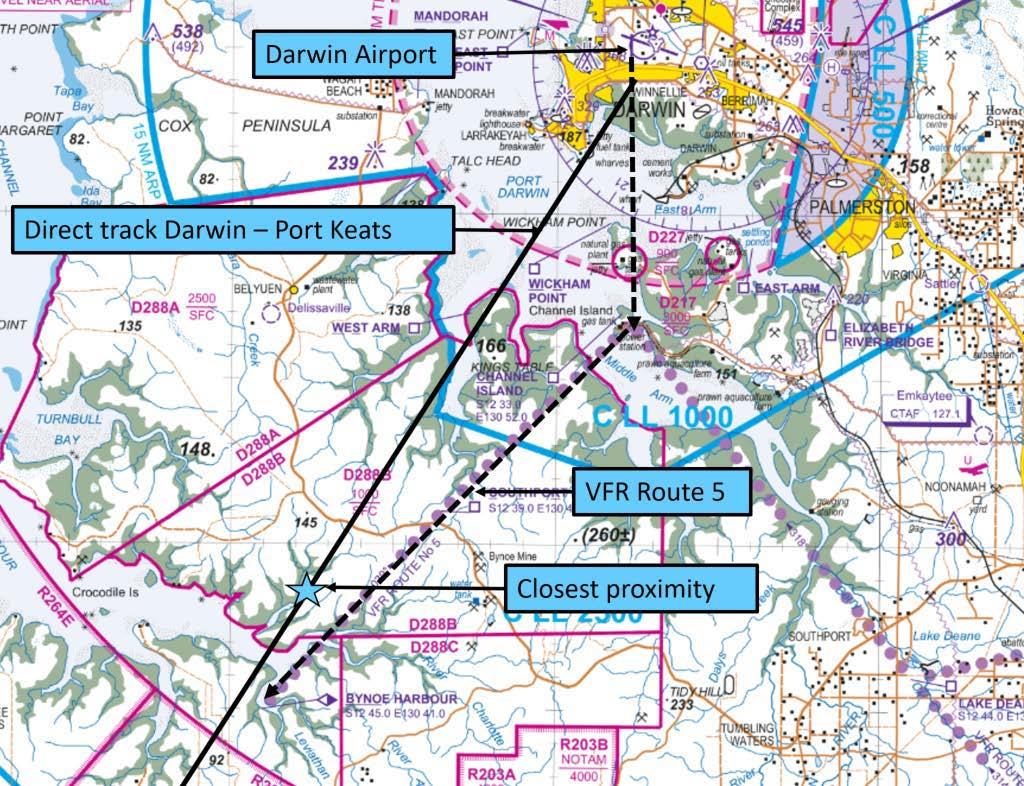
The ATSB is reminding pilots of the limitations of the see-and-avoid principle, and encourages the use of airborne collision avoidance system (ACAS) technology after two Cessnas were involved in near collision south-west of Darwin Airport on 6 December 2017.
This serious incident occurred, when a Cessna 210 and a Cessna 206, both operating charter flights under Visual Flight Rules (VFR) from Darwin Airport to Port Keats departed in quick succession, and planned to track at 8,500 ft. Air traffic control had advised each pilot of the aircraft’s presence and plans.
The Cessna 210 was the trailing aircraft, but it was travelling faster than the C206. As the two aircraft converged, the pilot of the C210 lost sight of the other aircraft. With the wing structure obscuring the view, the pilot advised air traffic control but took no further action to ensure segregation between the aircraft as they drew nearer.
…the aircraft reportedly came within 5 metres of each other as they passed.
The situation culminated with the aircraft reportedly coming within 5 metres of each other as they passed. Owing to a combination of radar accuracy/resolution and the inaccuracy of the displayed height of the C210, the controller issued a safety alert only after the near collision had already occurred.
While see-and-avoid is the primary means of preventing collisions between VFR aircraft, the limitations of those techniques are well known. Recent advancement of airborne collision avoidance system technologies has made them viable for general aviation aircraft, and they should be considered. They provide valuable information to alert pilots of other aircraft in their proximity and can direct the pilot to take avoiding action, thereby reducing the risk of collision.
This report highlights an ongoing safety issue in aviation. Check out our research report, Limitations of the See-and-Avoid Principle, for more information on this important subject.
Read the final report: Near collision involving Cessna 210, VH-SYT and Cessna 206, VH-HPA, 46 km south-west of Darwin Airport, Northern Territory, on 6 December 2017


